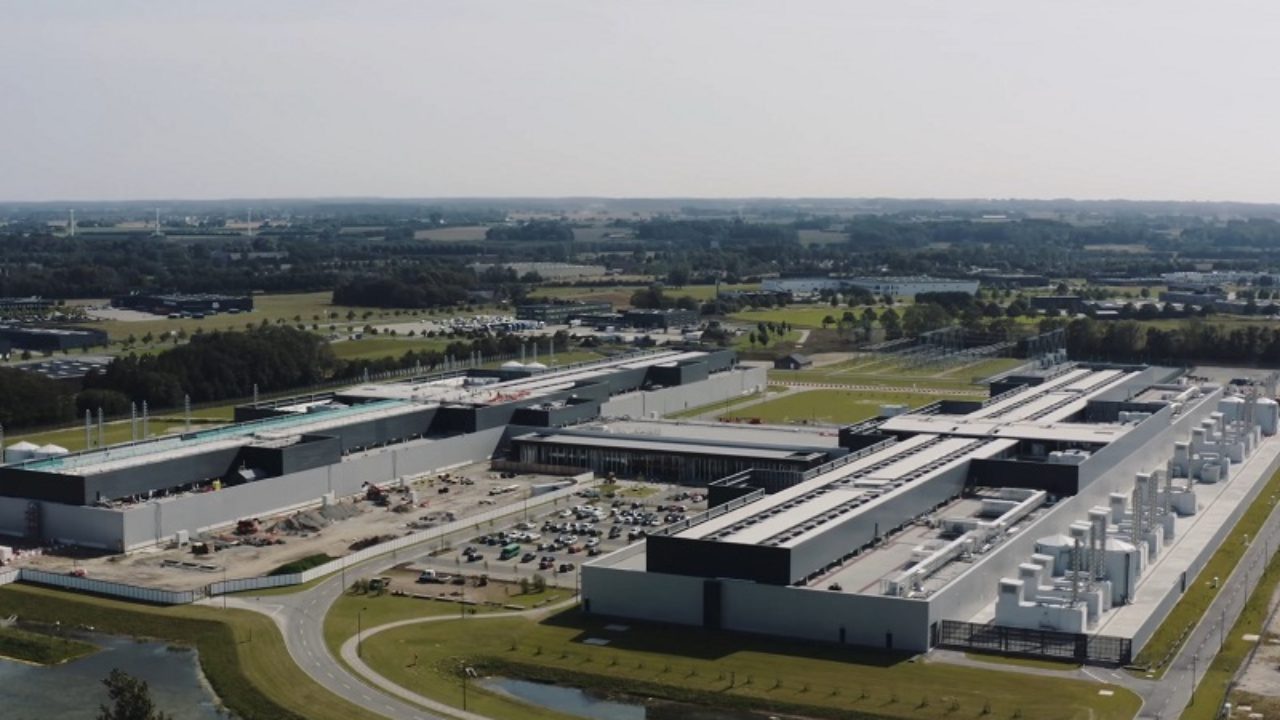
Facebook is expanding its European data center in Odens (Denmark) by 30 thousand square meters. The infrastructure expansion will cost the company approximately DKK 10 billion ($ 1.5 billion). Like all data centers of Facebook, the data center in Denmark runs on renewable electricity - wind.
In the new data center, the company has added a data center heat recovery system to heat Oden's homes. At the start of the project, the capacity of the system was sufficient to heat about 6900 houses. But the company plans to expand its data center, so now there will be more houses with high-tech heating - 11,000.
How it works
The heat removed from the servers heats the water, which passes through a copper tube system located on the roof of the data center. The heated water is directed to the heat pump of the local heat supply organization.
The temperature inside the computer rooms of the Facebook data center in Denmark is lower than that of most other data centers - between 27 and 46 ° C. As a result, the waste water is warm, not hot, and needs additional heating. Therefore, it is sent to heat pumps, where it is heated to the required temperature - 60 ° C.
Facebook is implementing this project with Danish heating supplier Fjernvarme Fyn. Heat pumps from this company are used in the technological process before being sent through the central heating system of Odena. For secondary water heating, a total of 165,000 MWh of energy will be spent per year. However, it is much more profitable than taking cold water and heating it up.
Facebook has stated that it is not a pioneer in such sustainable development projects. But a system in a Danish city is scaling the heat recovery technology to "a level that has not yet been achieved" by anyone else in the world.
Third "green" data center
In October 2011, Facebook created the Open Compute Project (OCP). Its main task is to facilitate the introduction of modern technologies in the company's data centers. Improving energy efficiency has become one of the important aspects of the program.
Now the social network has three data centers. In addition to the European one, there are two more data centers - they are located in the United States. The first was built in Prineville, Oregon, and the second in Forest City, North Carolina. Both data centers have good energy efficiency (PUE) ratios ranging from 1.06 to 1.08. This is practically an exemplary figure.
You can read how data centers are becoming "greener" here →
And also look at the old, but still interesting "roomtour" on the Facebook data center:
100%
In April 2020, the Facebook data center in Denmark received LEED Gold certification. It confirms that the data center meets all environmental regulatory requirements.
The city of Odens was chosen by the company not only because of the climate favorable for energy-efficient data center systems. The fact is that the government of this third most populous Danish city has plans similar to Facebook - to reduce the negative impact on the environment.
Denmark plans to completely phase out the use of coal for heat generation by 2030. The city of Odense aims to do this even earlier. The joint project with Facebook will allow us to achieve our goals faster. According to experts, the Facebook data center reduces the city of Odense's need for coal by 25%.
